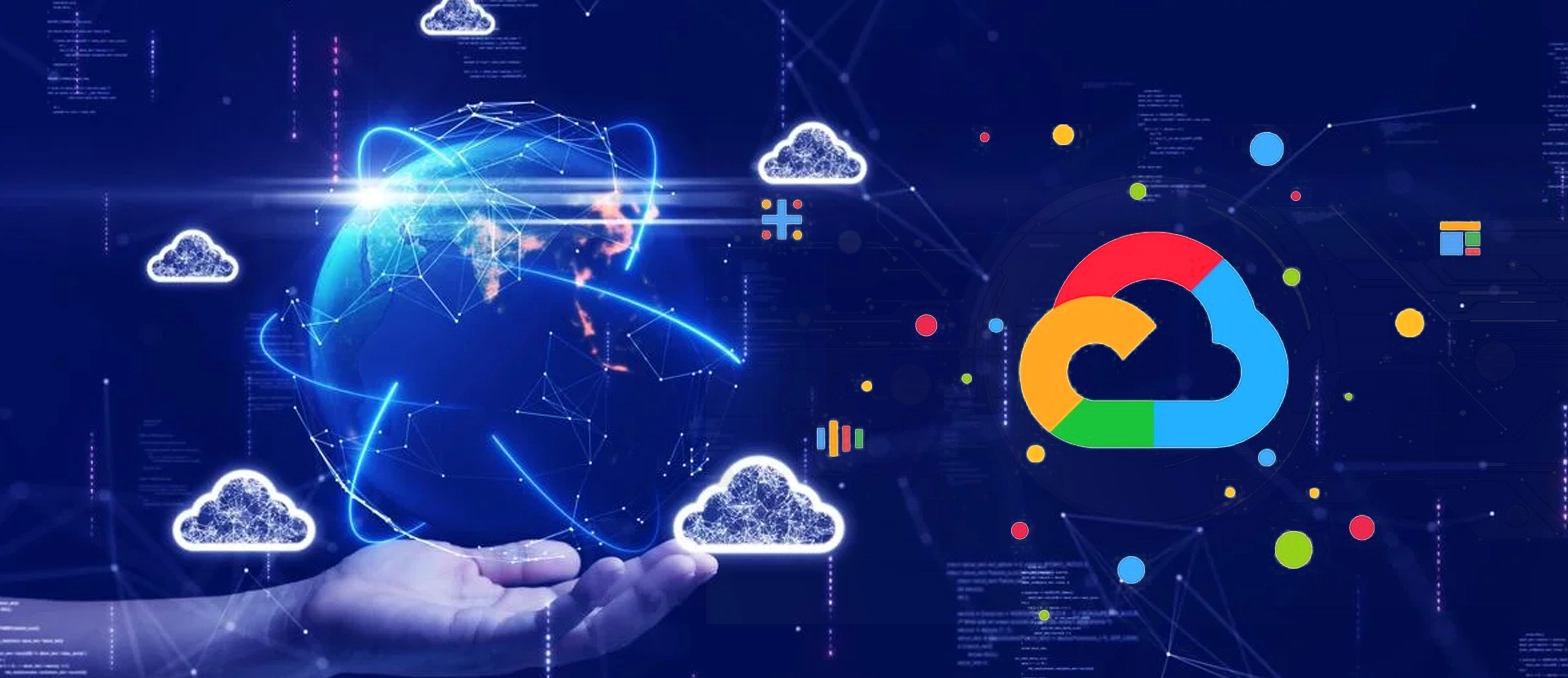Table of Contents
Electronic Health Record (EHR) has already made strides forward within the healthcare industry. Enhancing the functionality of patient care and information availability can improve patient care. By introducing new tools and processes, healthcare professionals can provide a better experience for their patients. For example, implementing electronic medical records (EMRs) offers a more comprehensive view of each patient’s health history. It allows medical staff to quickly access up-to-date information without having to search through paper files.
Electronic Health Records (EHRs), have experienced exponential growth within US healthcare facilities over recent years. According to data provided by the Office of National Coordinator for Health Information Technology, basic EHR systems had been adopted by 83.88% of non-federal acute care hospitals as of 2015 compared with just 9.4 in 2008.
Electronic Health Records (EHRs) are electronic databases storing patient-related information with advances in screening tests, medical imaging, and diagnostic technologies. Health providers are collecting vast amounts of records on individual patients, resulting in more data being gathered about them.
This data allows healthcare professionals to better understand patient health and provide more tailored treatments. There are various methods available to healthcare networks for sharing information across networks and providing greater care through easier collection and access to medical professionals.
The global EHR market is projected to reach $40 billion by 2024, indicating its increased usage at healthcare facilities worldwide. Perceived as essential tools for improving healthcare delivery systems, EHR features and frameworks have long been seen as critical components of the modern medical landscape.
From patient record management to online appointment scheduling, EHRs help streamline processes and improve communication between providers, patients, and other stakeholders.
What is an Electronic Health Record (EHR) System?
Electronic Health Record (EHR) Systems have revolutionized healthcare provision. Healthcare providers use EHR systems to store, access, and manage patient information digitally. They commonly use words such as EHR system, electronic health record system and healthcare technology patient data management, or medical records software in reference.
Implementation of an Electronic Health Record system has many advantages for both healthcare providers and patients. By eliminating paper records and manual data entry processes, workflows become more streamlined, saving both time and reducing errors, ultimately increasing overall efficiency.
An EHR system facilitates seamless collaboration among healthcare providers involved with patient care. Within just a few clicks, doctors can gain access to vital patient data such as medical history, lab results, medication details, and treatment plans. They are providing for improved decision-making and customized patient treatment plans.
Patient privacy and data security are of utmost importance in healthcare, which is why EHR systems employ stringent security measures that safeguard sensitive information against unintended access or breaches. They abide by stringent regulations like HIPAA to maintain patient confidentiality while guaranteeing patient security.
Ready to Transform Your Healthcare System? Explore A3logics EHR Development Services Today!
Mobile App Development EDI Development Custom Software Development
AI Development
Importance of Electronic Health Record (EHR) System in Healthcare
Electronic Health Record (EHR) systems play a vital role in modern healthcare by improving both care quality and safety. While streamlining administrative processes. Their benefits range from improving decision-making capabilities for healthcare professionals and continuity of care improvements, to cost savings opportunities, and increasing patient engagement in Electronic Medical Record Software.
1. Increased Patient Care and Safety
- EHR systems allow healthcare providers to access patients’ medical records quickly.
- They are giving them the power to make well-informed decisions regarding the diagnosis and treatment of patients quickly and accurately.
- EHR systems significantly lower the risk of errors due to handwritten documentation.
- Lost paper records, guaranteeing accurate patient information at any given moment in time.
2. Efficient Data Administration
- EHR systems simplify documentation processes by eliminating paper records, thus decreasing administrative tasks such as filing and retrieving documents.
- Healthcare IT systems enable healthcare professionals to easily store, retrieve, and share patient information, resulting in enhanced collaboration and coordinated care delivery.
3. Improved Decision-Making
- EHR systems offer comprehensive patient information in one centralized place. It could include medical history, lab results, medications, or allergies, for instance.
- Healthcare providers can now easily examine trends and patterns in data quickly to inform evidence-based decision-making for improved treatment outcomes.
4. Continuity of Care
- EHR systems ensure seamless continuity of care as patient information can be easily shared across healthcare settings.
- Eradicates the need for patients to repeat their medical history at each visit or transfer between hospitals and clinics.
5. Cost Savings
- Adopting an EHR system can result in substantial cost savings by cutting associated expenses with paperwork-related tasks such as printing, storage space requirements, and manual record management.
- Medical records also help avoid duplicative tests or procedures by offering an overview of each patient’s medical history.
6. Increased Patient Engagement
- EHR systems typically feature patient portals that give individuals online access to their health records.
- Patients can access their test results, schedule appointments, and request refills conveniently from any location with internet access.
Benefits of Having Your Own Electronic Health Record (EHR) Software
1. Pros and Cons of Electronic Health Records
Electronic health records may present both advantages and drawbacks to both healthcare facilities and patients alike, which should be carefully considered when adopting them.
2. EHRs Offer Convenience to Patients
A newly relocated individual sought treatment at a dermatology clinic. When trying to arrange an appointment, however, an administrator of that software development frameworks organization requested information and records about previous treatment centers where she has received care. They necessitated multiple phone calls and email inquiries within two weeks just so these previous clinics would forward this data to her new provider facility.
EHRs offer many advantages to patients by creating a secure system where multiple organizations share patient data in real-time and making accessing and receiving care faster for both themselves and others much simpler. When patients require information regarding previously prescribed medicines or parents want to check whether their child has received immunizations. Electronic health records make sharing this data more readily.
3. EHRs Can Lead to Confusion Within Health Organizations
At one large hospital, staff and administrators recently adopted an advanced EHR system. While another department utilized an older EHR sporadically without developing guidelines or procedures to guide its use, another section did not implement any EHR system at all. It created much confusion.
EHR adoption may lead to difficulties in communicating and sharing patient-related data between departments using various EHR systems and leaving patients and doctors confused when dealing with multiple organizations. Departments that have adopted EHRs but implemented them differently, for instance, requiring one account but not another EHR system.
4. EHRs Can Increase Health Services Usage in Rural Areas
A person living in a remote rural area with the nearest medical facility several miles away might initially hesitate to travel there when suffering symptoms associated with colds. However, when their PHR online reveals these were actually symptoms related to one of his preexisting conditions instead.
He led them on a journey to receive more accurate diagnoses by taking advantage of the data stored in EHRs. Along the way, the staff was able to access the information and provide patients with reliable results. That provides access to detailed health history records from multiple health providers.
Who can access detailed health histories stored through EHRs when visiting? Only clinic staff can get hold of this information. EHRs Can Increase Healthcare Usage by Rural Residents Individuals living in rural residents will access EHRs when symptoms of the common cold symptoms develop due to EHRs having access to more accurate diagnoses.
HealthIT.gov notes that healthcare software development companies can assist individuals living in rural areas by offering an accurate picture of a person’s medical history, clarifying if specialized treatments are necessary, and offering more affordable healthcare solutions. Suppose an individual in a rural area has already received certain immunizations. An EHR could store this data and prevent her from having to receive or pay for additional immunizations she does not require.
5. EHRs May Not Work as Expected
A health facility recently advertised its adoption of an Electronic Health Record system. As a means to make healthcare more efficient for both patients and practitioners. Yet patients downloading mobile apps to access their records experience difficulty with finding what they’re searching for on these applications. Similarly, doctors are forced to repeatedly enter login credentials into this system, which takes time away from providing direct patient care.
EHR systems of all shapes and sizes still may have flaws or issues related to their functionality; this problem can become compounded when different departments, facilities, and practitioners utilize EHR systems differently.
6. Additional EHR Pros and Cons
EHRs offer great potential to improve healthcare efficiency and affordability. However, hospitals and medical facilities may hesitate to implement one due to both their financial investment and training time requirements for staff to become acquainted with it.
EHRs being stored and accessed digitally makes data vulnerable to being stolen by cybercriminals or hackers and leads some patients to worry about too much personal data. About themselves has been collected within EHRs or simply not aware that such extensive collection exists about them.
However, electronic health records (EHRs) contain data beyond individual patients that they refer to. A hospital, clinic, or health organization could discover through collecting and analyzing EHR data. There has been an upsurge in flu-like symptoms within certain geographical areas, and use this knowledge to conduct outreach initiatives that help these people get treated. While simultaneously preparing practitioners for an expected large increase in new patients through custom software development services.
“Digital health records, when properly implemented into digital healthcare infrastructures. Allow a seamless exchange of data that leverages digital advances while revolutionizing how care is delivered and compensated,” as per HealthIT.gov.
7. Making Health Care More Cost-Effective
Advances in telehealth have allowed individuals to gain access to more care more affordably. Conveniently than ever, instead of traveling long distances for appointments or refilling prescriptions. Patients now often consult a practitioner via video conference, while mobile app services allow automatic refills on prescriptions.
Like its telehealth counterparts, EHRs will become increasingly beneficial as healthcare technology progresses and provide more cost-efficient care options to patients.
8. Enhancing Patient Health Outcomes
At hospitals or health organizations that don’t use EHR systems. Doctors might miss noticing when prescribing medications to their patients that will interact negatively with medications being taken for other conditions.
HealthIT.gov notes how “a qualified EHR not only tracks medications or allergies taken by its patient. But it can also automatically check for potential issues whenever new prescriptions are prescribed, alerting clinicians of potential conflicts.” Having this comprehensive record available helps identify health issues more readily and improve outcomes.
9. Making Communities Health Conscious
EHRs can be particularly advantageous to individuals living in rural communities and can help make them more health conscious. According to HealthIT.gov, EHRs offer efficiency and cost-cutting benefits, including improved patient health/quality of care through better disease management and patient education.
Thus making patients aware of all their treatments in detail and the potential risks that they could pose to themselves and the greater community they reside within. EHRs offer many advantages while having some potential downsides, making them invaluable tools in any healthcare organization.
Even so, EHRs remain essential tools today and will become even more essential as time progresses. They must continue to serve practitioners, patients, and healthcare staff effectively as tools that improve care provision. It is vital for health professionals to fully comprehend all EHR applications available as ways to enhance patient health care delivery.
Customized EHR Solutions Tailored to Your Practice. Schedule a Free Consultation Today!
What are the Important Features of Electronic Health Record (EHR) Software
Electronic Health Record (EHR) software is an information technology solution used by healthcare providers that store and organize patient health information. EHR software helps healthcare providers streamline communication between providers and easily share patient records. Between offices, provide better care to patients while decreasing paperwork and administrative duties, thus saving both time and money. Some key features of EHR software include:
1. Patient Database
Electronic health record software allows healthcare providers to utilize its patient database feature, which allows healthcare providers to store and retrieve patient information such as demographics, health history, and medical records. Lab results for each of their patients – helping doctors track each one and make better care decisions based on that patient’s history. It enables better decision-making.
2. Electronic Medical Records (EMR) Capabilities
EMR functionality enables healthcare providers to easily create, store, and access electronic versions of medical records. It was pertaining to individual patients – such as patient histories, diagnoses, prescriptions, lab results, imaging exams, or any other relevant details.
3. Clinical Decision Support (CDS)
CDS (clinician decision support system) is an EHR software component that offers clinicians evidence-based recommendations for diagnosis and treatment decisions. Analyzing patient information provides healthcare providers with more informed decision-making capabilities.
4. Electronic Prescribing (e-prescribing)
E-prescribing is an EHR software feature that enables healthcare providers to transmit prescriptions electronically—directly to pharmacies, eliminating handwritten prescriptions while increasing accuracy and saving time.
6. Patient Portals
A Patient Portal provides patients access to their healthcare software development services, such as lab results, immunization records, and prescription information. As well as secure communication with healthcare providers and appointment scheduling capabilities.
6. Security
EHR software includes numerous security measures designed to keep patient and provider information out of unauthorized hands, such as Encryption, data backups, and user authentication. It should prevent unintended access.
Evaluating Key Features and Functionality Before Choosing the EHR Software
Before selecting an electronic health record (EHR) software solution for your practice. It must possess all of the features and functionalities essential to meeting its demands. Careful consideration must be given in selecting an EHR software to meet both comprehensive care and organizational demands simultaneously.
1. Explore and Compare EHR Software Options
You must conduct in-depth research of available EHR systems on the market in terms of features, functionality, pricing models, and customer support available from different vendors. You should select an EHR system that meets both your practice’s needs and budget constraints when making this selection.
2. Assess Key Features & Functionality
Once you’ve identified suitable EHR software systems, it is critical that you carefully analyze their key features and functionality. Look out for features essential to your practice, such as medical billing capabilities, clinical decision support tools, data & analytics, patient portals, etc.
3. Prioritize Data Accessibility & Security
Priority one when selecting EHR software should be data accessibility and security. Especially encryption and user authentication measures that protect patient records against unauthorized access.
4. Review Integration Capabilities
Make sure the EHR you choose can seamlessly connect to other systems within your practice. Including laboratory systems, HIEs, and medical billing solutions to guarantee smooth data throughout your practice. It ensures an optimal patient experience!
Before selecting an EHR software system for your practice, carefully evaluate it.
How its use will have an impactful impact on the daily operations of your practice. Consider its ease of implementation as well as whether providers and patients find it user-friendly. Inquire into usability for hybrid mobile app development concerns such as backup processes, training requirements, and customer support. These factors will all influence which EHR system you go for.
Challenges in EHR Software Development
EHR software development can be an arduous undertaking that presents numerous hurdles, from technical considerations to regulatory requirements that need to be managed properly in order for an EHR system to succeed. Here, we examine some of these major difficulties associated with developing an EHR system.
1. Maintaining Data Security and Privacy
One of the main challenges developers of EHR software face in creating EHR is maintaining proper data security and privacy. Meaning their software should protect information against unintended access, use, disclosure, and destruction.
2. Integrating Health Guidelines
EHR software developers face another major hurdle in meeting compliance with health standards. Such as HIPAA regulations in their software design to protect patient data. Consequently, developers must ensure their software adheres to such laws for full patient protection.
3. Meeting User Requirements
EHR software developers often face difficulty satisfying all the user requirements when developing EHR software, including ease of navigation, customizable views, and secure data storage.
4. Staying Current with Changes to EHR Software
EHR software must be kept current as medical technology develops. New regulations come into effect, which require developers to upgrade it regularly. To remain relevant with changes occurring within its field.
5. Maintaining Data Integrity
Developers may struggle with maintaining accurate and consistent patient data across various users. In order to do this effectively, they need to test the software carefully in order to test for data integrity and ensure its integrity is preserved.
Streamline Medical Data Management with Our EHR Development Services. Book a Free Consultation!
Technology Used in EHR Software Development
Electronic health records (EHR) software development is an ever-evolving field of technology. To keep pace with industry trends and provide excellent services, developers must remain abreast of advances. Here are some technologies commonly utilized when developing EHR software:
1. Cloud Computing
With cloud computing services, developers are able to build applications without physical servers being required, offering greater scalability and cost reduction for developers.
2. Platform as a Service (PaaS)
PaaS offers developers an integrated development environment where they can design, build, and deploy web apps without needing to configure hardware or install software on local machines.
3. Artificial Intelligence (A.I.)
Artificial intelligence technology can assist EHR software in improving accuracy and efficiency when processing patient data, as well as helping predict outcomes more precisely.
4. APIs
Application Programming Interfaces (APIs) allow developers to connect their software with external systems and access and share data with third-party services via application programming interfaces (APIs).
5. Natural Language Processing (NLP)
NLP technology is utilized during EHR software development to enable it to understand natural language input from patients and providers alike.
6. Big Data
By taking advantage of big data analytics capabilities within EHR software developers’ applications, developers gain greater insight into patient behaviors and trends. Which ultimately allows for smarter decision-making and enhanced patient services.
How to Implement Data Security and Compliance with HIPAA and Other Regulations?
Data security and compliance with HIPAA (Health Insurance Portability and Accountability Act) regulations are crucial to safeguarding patient privacy. HIPAA sets standards for protecting electronic health-related information as well as outlining guidelines on how organizations may use that data. At the same time, healthcare organizations must put measures in place to meet HIPAA and comply with other regulations when protecting patient data. Here are a few steps healthcare organizations should follow when implementing data security and compliance:
1. Implement a Data Security Plan
Developing and executing an in-depth data security plan is vital in safeguarding patient information. Such plans should include risk analyses, security protocols, and policies on access rights – among many other elements.
2. Establish Network Security
Secure networks are necessary for protecting digital health records against potential cyber threats. Illicit activities, such as creating firewalls or creating secure networks with other measures in place to keep cyber criminals away. To achieve this goal, create firewalls. Setting up secure networks with additional measures might be required to maintain the safety of digital health records.
3. Train Staff on Data Security
Educating all staff members about data security protocols and their responsibilities when handling patient information is of utmost importance, especially HIPAA laws, as well as best practices that ensure patient privacy. It must include HIPAA laws as well as best practices that preserve patient privacy.
4. Monitor Access to Patient Data
In order to keep patient data secure, organizations should closely monitor access. It can be accomplished with user activity logs or similar tools that help detect unusual activities that could signal potential breaches in security.
5. Employ Encryption
As an extra safeguard, Encryption provides another measure to safeguard patient data in case of data theft or unapproved access.
6. Conduct Regular Audits
Organizations should regularly audit their systems to verify HIPAA and other regulations compliance. As well as detect any breaches or vulnerabilities before they become a potential problem in software development companies in USA. By regularly performing an audit of this nature, breaches or vulnerabilities may be caught before becoming serious problems.
How to Choose the Best Healthcare Software Development Company for EHR Software Development in 2025?
Choosing a Healthcare Software Development Company for EHR Software Development in 2025 can be a daunting task. Here are a few helpful hints and tips that might make the decision-making easier:
1. Investigate Different Companies
Do your research before hiring any company offering EHR software development services, taking note of their portfolio and customer reviews, as well as looking at past projects to see if they have experience providing similar types of development services as you require.
2. Evaluate Your Needs
Carefully consider and determine your specific healthcare software development company requirements. When searching for service providers to help narrow down your choices and select one suitable to meet them.
3. Evaluate their Technical Knowledge
Your ideal software development company must boast an experienced team of developers—engineers familiar with current technologies and trends, with adequate knowledge of both. Be sure to assess their technical proficiency so you’re confident of their ability to tackle your project efficiently.
4. Consider Their Prices
As part of your search for an affordable healthcare software development firm, make sure to compare pricing across companies in order to identify one with quality services at an acceptable cost.
5. Seek Customer Assistance
Attracting customer support that offers quick service and after-sales support will go far toward guaranteeing the success of any project, from conception through execution and completion. When searching for software development companies. Make sure they offer prompt customer care services and reliable post-sales support – this way, your project runs efficiently and on schedule!
6. Assess Your Security Measures
When handling sensitive patient data, selecting a software development company capable of guaranteeing its security is of utmost importance. Be wary of companies not certified with HIPAA or similar security standards – evaluate how their approaches handle data privacy, Encryption, and authentication as a measure for potential concerns.
7. Assess Their Adaptability
As technology rapidly changes over time, it’s vital that software development companies can adapt quickly to evolving trends. You should seek a partner willing to adapt quickly in order to keep your project up-to-date and on schedule.
8. Meet Quality Standards
Before selecting a healthcare software development company, be sure to evaluate their work against industry standards. Look for organizations that utilize best practices such as version control—and code reviews during development processes in order to guarantee quality control throughout.
Electronic Health Record (EHR) Software Development Cost
Electronic Health Record (EHR) software development has quickly become a trend within healthcare. EHR allows medical records to be stored electronically, making them more readily accessible than ever. However, there may be costs associated with EHR software development, which should be carefully considered prior to investing in such an investment program.
Cost is, of course, one of the primary concerns with EHR software development; price can range significantly depending on the features and capabilities of each program. EHR programs range from simple, low-cost versions to complex ones that provide extensive clinical and administrative features.
As part of the total cost associated with developing an EHR system, costs associated with implementation, training, and maintenance must also be factored into consideration. Implementation fees cover items like hardware/software license fees as well as installation consulting fees associated with installing it.
Training expenses include employee time spent learning how to use the system. As well as any specialized programming or courses for learning about its features. Maintenance must also be considered to ensure the system stays running and compliant with current regulations.
Before selecting an EHR software development company for EHR software development, it is crucial that both the cost and reputation of the chosen firm are taken into consideration. An ideal company would possess prior experience developing such systems while being able to provide references from previous clients who can attest to its services. Furthermore, cost estimates must be obtained upfront before entering contracts in order to prevent surprises down the line.
Your Path to Seamless Healthcare Management Starts Here. Connect with Our EHR Developers!
Mobile App Development EDI Development Custom Software Development
AI Development
Conclusion
As technology evolves, healthcare organizations with digital transformation services realize the necessity for an EHR system that provides efficient and accurate care, Increasing patient outcomes while simultaneously streamlining staff efficiency, increasing staff communication with providers, and managing costs more effectively.
By adopting such an EHR solution by 2025, healthcare organizations will benefit from improved patient care, stronger provider collaboration, and overall increased efficiency within staff operations.
As part of the 2025 EHR implementation efforts, organizations must find an ideal healthcare software development company. Organizations should carefully consider factors like experience cost of development and compliance with regulations when searching for suitable companies to partner with for healthcare software development projects. Furthermore, an optimal EHR software development cost must also be determined to maximize benefits at an economical price point.
Through effective EHR software development companies and costs, organizations can implement an electronic health record system in 2025. That meets both their needs and is compliant with regulations, thus assuring they offer their patients optimal care.
Got Questions? We’ve Got Answers!
Q1. What are Electronic Health Records (EHR) systems?
An Electronic Health Record (EHR) system provides a digital representation of a patient’s health history. It includes clinical details such as diagnoses, medications, allergies, immunizations, and laboratory results. As well as demographic and administrative details about that individual patient.
Q2. How does an Electronic Health Record (EHR) system aid patient care?
An electronic health record system improves patient care by giving providers access to current, accurate information quickly and reliably. With its use, doctors can more efficiently follow a patient over time while offering better care and helping prevent medical mistakes.
Q3. What are the advantages of adopting an Electronic Health Record system by 2025?
Implementing an electronic health record system in 2025 can assist healthcare organizations in providing better patient care, enhancing communication among providers, increasing efficiency, and decreasing costs associated with medical billing and paperwork while meeting compliance regulations such as the Health Insurance Portability and Accountability Act (HIPAA).
Q4. What measures must be implemented when developing an EHR system in 2025?
In 2025, organizations should implement several security measures when developing EHR systems, including creating strong passwords and installing firewalls and antivirus software as part of an overall plan for safeguarding them. Regular audits should also take place. Finally, organizations must also make sure all employees receive training regarding HIPAA regulations.
Q5. How can I select an appropriate healthcare software development firm to develop one?
To select an effective EHR software development company in 2025, organizations should evaluate factors like experience and cost of development as well as compliance with all regulations and standards.
Q6. What characteristics should an Electronic Health Record (EHR) system possess?
An Electronic Health Records system should include features like patient data entry, appointment scheduling, and prescription ordering, as well as medical billing management, lab results management, and insurance filing and reporting capabilities. Furthermore, its user-friendliness makes integration easy between existing systems and databases.






